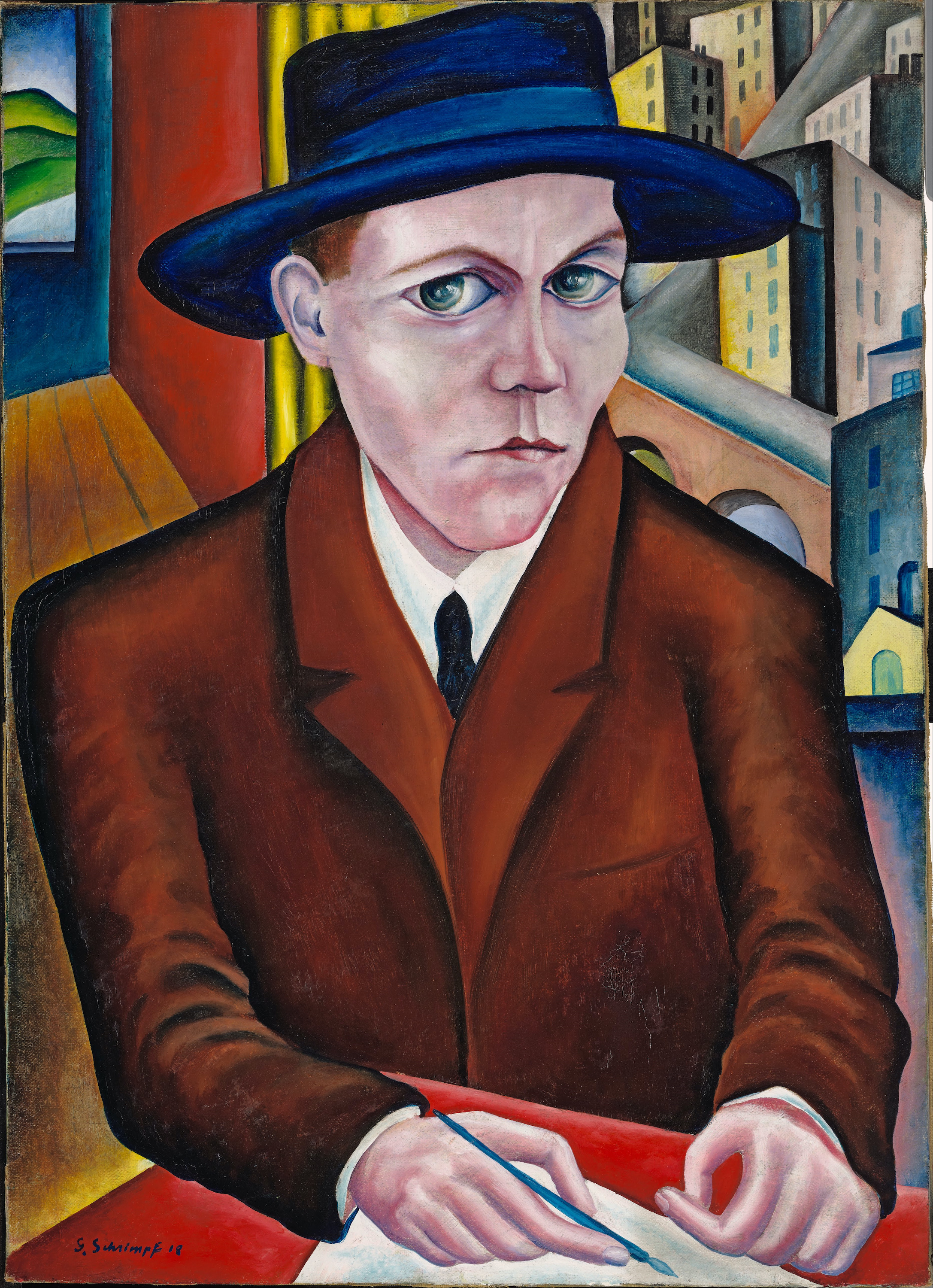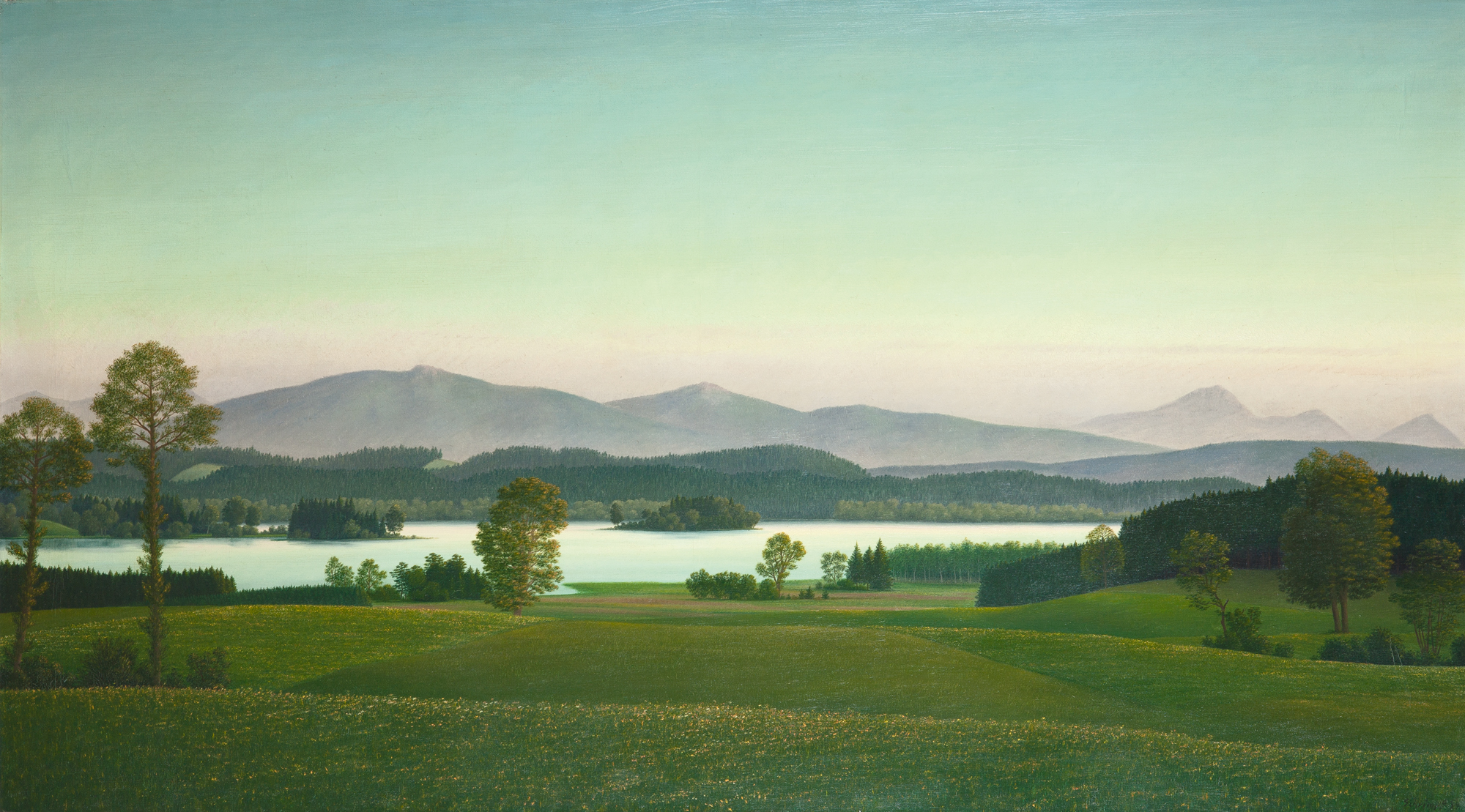The eyes of the subject leap out of the painting. The bright colors and the angles of the lines in the painting follow the contours of the body. The pen, the left shoulder, and the "aqueduct" in the background all seem to cant to the same degree. Even the little "house" off the left shoulder continues the line, keeping the painting very composed and self-contained.
Graf, the subject of the portrait, was a German socialist writer whose books were not initially banned by the Nazis and were in fact approved as recommended reading. Graf published his famous appeal, Verbrennt mich! ("Burn me!") in the Vienna Arbeiter-Zeitung. In 1934 Graf's books were, in fact, prohibited in Germany. He emigrated to Brno in Czechoslovakia, and the Third Reich revoked his citizenship. In 1938, Graf left Europe via Holland, taking his soon-to-be second wife along but leaving his first wife and their child behind in Germany. Graf later found popularity and admiration in US academic circles and back in Berlin for his “uncompromising intellectual attitude” and his “important literary works.”
Georg Schrimpf was a German painter and graphic artist. Along with Otto Dix, George Grosz, and Christian Schad, Schrimpf is broadly acknowledged as a main representative of the art trend Neue Sachlichkeit (usually translated as New Objectivity), which developed in Weimar, Germany in the 1920s as a countermovement to Expressionism and Abstraction. Schrimpf was listed as a producer of Degenerate Art by the German National Socialist government in the 1930s.
In 1927, Schrimpf began teaching at the Meisterschule für Dekorationskunst in Munich. The "right-wing" of the movement were not immediately condemned by the Nazi regime at an early stage and were able to take on professorships in painting after the regime seized power in 1933. Schrimpf's work was seen as an acceptable form of German Romanticism by the authorities.
Schrimpf became professor at the Royal School of Art in Berlin in 1933 but was fired in 1937 because of his “red past.” He had been a short-time member of Rote Hilfe, a socialist organization. For the same reason, the Nazi regime then banned his works from public exhibitions. Schrimpf died in Berlin on 19 April 1938.
Georg Schrimpf was a German painter and graphic artist. Along with Otto Dix, George Grosz, and Christian Schad, Schrimpf is broadly acknowledged as a main representative of the art trend Neue Sachlichkeit (usually translated as New Objectivity), which developed in Weimar, Germany in the 1920s as a countermovement to Expressionism and Abstraction. Schrimpf was listed as a producer of Degenerate Art by the German National Socialist government in the 1930s.
In 1927, Schrimpf began teaching at the Meisterschule für Dekorationskunst in Munich. The "right-wing" of the movement were not immediately condemned by the Nazi regime at an early stage and were able to take on professorships in painting after the regime seized power in 1933. Schrimpf's work was seen as an acceptable form of German Romanticism by the authorities.
Schrimpf became professor at the Royal School of Art in Berlin in 1933 but was fired in 1937 because of his “red past.” He had been a short-time member of Rote Hilfe, a socialist organization. For the same reason, the Nazi regime then banned his works from public exhibitions. Schrimpf died in Berlin on 19 April 1938.


 Georg Schrimpf
Georg Schrimpf